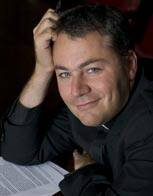Driving in the neighborhood during my last visit home, I was surprised to find that the mall nearest to my house, Randhurst, would be closing at the end of the month, to be replaced eventually by some sort of outdoor lifestyle center. I spent many an evening and weekend during my teenage years at Randhurst, selling women’s shoes at a retail outlet. It was here I learned what “taupe” meant; here I saw up close the horrors high heels cause over decades to women’s feet (ladies, trust me, it’s not worth the extra inches); and here that I regularly had my sales stolen by the “kindly” older saleswoman in the heavy makeup and jet-black bouffant. She wasn’t the top seller for nothing.
Like some casinos today, malls are designed to look like something they are not, old-style small-town squares, Main Streets U.S.A., with footpaths and benches, light poles, shrubbery, restaurants and brightly lit store windows. They are places you’re supposed to want to come for the day, destinations where you can meet up with friends, shop and visit.
Randhurst was no exception. When it first opened in 1962, it was the first enclosed regional mall in the Chicagoland area and the largest enclosed air-conditioned space in the United States. I cannot say I was a mall crawler growing up, but every time I returned home for a visit, I would go there, often just to sit, have a slice of pizza from Sbarro and let my life catch up to me.
Over the course of years, what was once a stand-alone mall grew to have quite a few busy satellites, including Home Depot, Borders, Steak & Shake, the BBQ chicken chain with the acronym I can never remember and a 12-theater, stadium-seating megaplex to which my parents went every Friday afternoon. But over the last five years or so, you could not help but notice that things were changing for the worse inside. Shop sites lay empty. More and more of the businesses that remained had the impromptu feel of a TV program on public access cable—the discount bookseller with the ugly green price tags and the terrible selection; clothing shops where you could have your name ironed onto a hat or T-shirt; the dollar store. But Randhurst hung on and tried to change; a major section outside a closed department store was used as a children’s play area; some new chains, like Dave & Barry’s and Costco, tried to fill the gaps left by old ones.
At my last visit, most of the stores were shuttered; the few people there were packing boxes. The mall had the barren, post-apocalyptic feel of a zombie movie. But standing in its very center, on a raised platform between the first and second floors, the mall’s carousel, “the Venetian,” remained lit up and waiting for customers; from its top a carved horse leapt toward the ceiling—a reminder of a golden age.
Like everything else, the structures we create change, age, diminish and eventually die. An astronomer once told me that when a star is nearing its end, it begins to pour out material like hydrogen or carbon that actually provides the source of life for other stars. As a Jesuit I have found aging members in community are often like that too; their stories and presence nourish the rest of us.
But walking the paths of Randhurst one last time, I sensed less a fading star than a black hole. What was clear was a sense of absence, of this town center that was there and yet somehow not. Once upon a time it had been a focal point for this community, maybe never so central as a Chicago parish in the 1950s could be, but still a significant part of this suburb’s identity. Now, with the exception of that carousel, it felt like nothing at all.








